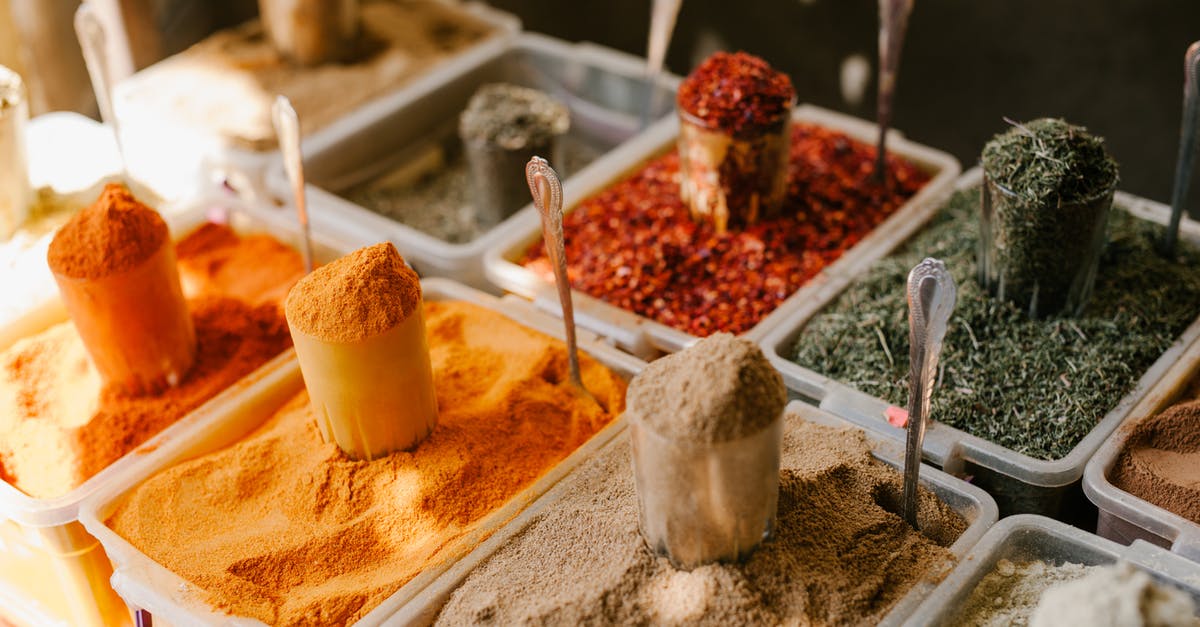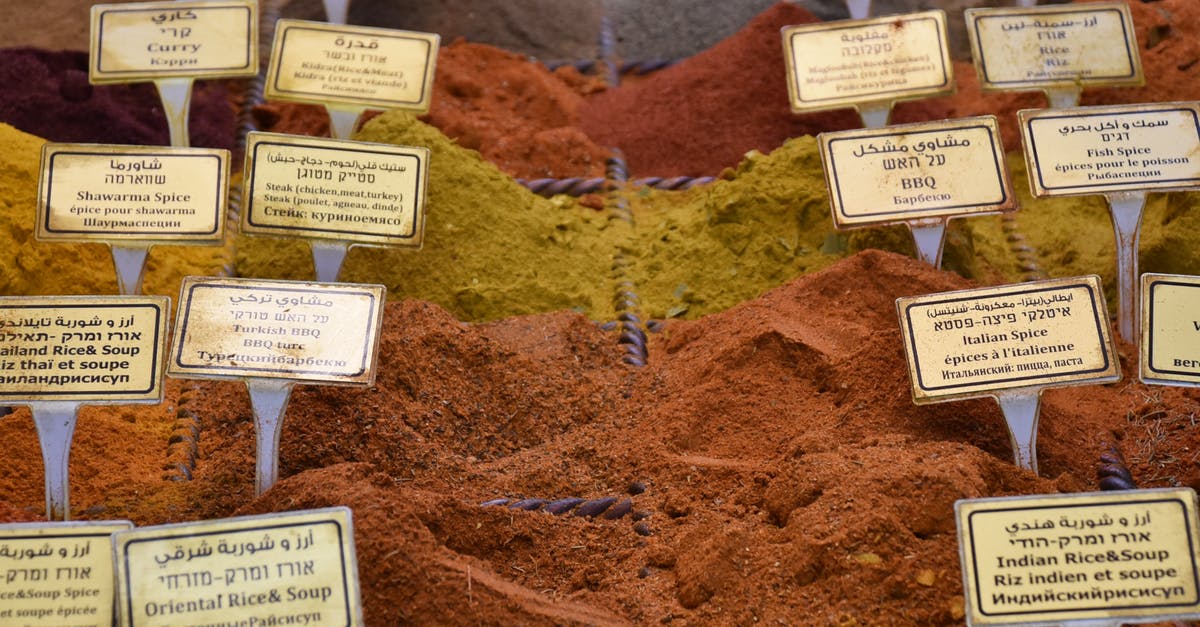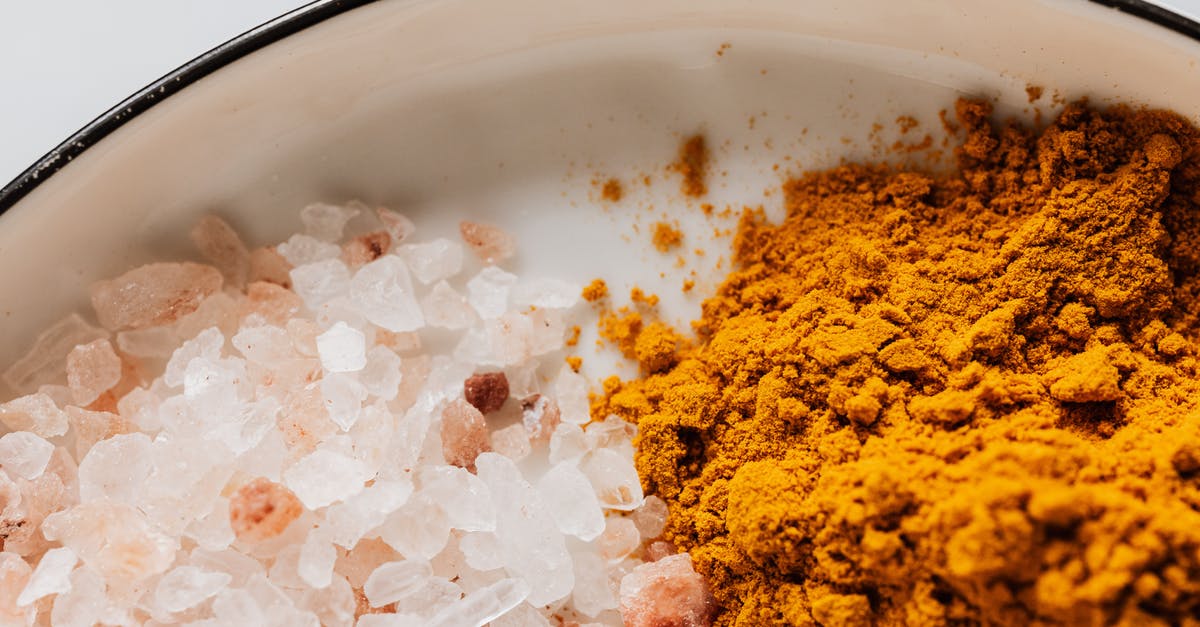Why is garam masala in many curry paste/powder recipes?

Garam masala, of course, is a blend of warming spices. However, many of those spices are listed individually in recipes for curry pastes and powders that also call for garam masala.
Since most garam masala mixes wouldn't specify ratios even if they do list the ingredients, doesn't that essentially mean you're randomly altering in unknown ways the ratios of key spices in the curry recipe?
When using garam masala within another spice blend rather than on its own, why not just list each desired ingredient of the main recipe in its ideal amount so everyone knows from which starting point they're tweaking and perfecting the recipe for their own tastes?
Best Answer
It sounds like you're assuming that recipes are scientific creations carefully engineered to achieve a precise result. But most "recipes" are an attempt to relay a rather imprecise series of steps based on available ingredients, familiarity, superstition, and habit in a way that is approximately reproducible by someone else.
Even within the bounds of attempted precision, most cooks execute the instructions slightly differently because their experiences of what works and what doesn't work is different, their skills vary, and because they interpret the instructions differently due to language ambiguity.
Imagine you're a cook who grew up cooking Indian food based on how your mom or dad cooked. When she says "we're having brinjals" or "we're making channa masala", that creates a picture in your mind of how the dish is supposed to taste. When you see mom grab a handful of garam masala, it's because she knows roughly what it will taste like, and tweaks the seasoning a bit based on her perception that dish X benefits from more cloves and dish Y benefits from more coriander seeds. Now you decide to write down the recipe so that you can reproduce it in case you forget the details. You are not going to send the garam masala off to the lab to analyze what ratio each spice is present in there. Garam masala is just the "spicy blend" and "biriyani masala" is just the blend of sweet spices you use as the foundation for a seasoned rice dish, and chaat masala is the starting point for things you put on fruit or snacks. You don't need a deeper level of detail, because that's what you've always used.
Then you go to work in a different region, and you find out that the typical garam masala sold by the spice vendors is completely different; this one has a ton of cloves and a lot less cumin. You react one of two ways: "Oh, I should add more of X to compensate", or "Well, it's close enough."
In your mind, the function of the garam masala is to provide a starting foundation so you don't have to give as much thought. It has the base notes you expect in a wide range of dishes; when the dish benefits from some other spice, you add a little of that.
This is how most of the world cooks. We don't necessarily start with a recipe and get a dish; we start with a dish and then someone asks us for a recipe, and we furiously attempt to write down the details of what we do the next time we make it, probably changing the dish in the process in our attempt to achieve some form of measurability and apparent precision. Why 1/4 tsp exactly? Well, that was the unit of measure I had handy when I decided I needed "a little of this."
And this is also why it doesn't matter so much. You assume there's some ideal; in practice, there is no ideal, there's just what you're used to. Basic technique often makes a bigger difference in the quality of the dish than variations in the exact ratio of the spices. Toast your fenugreek, but don't burn it. Sautee onions until they're tender. Simmer, but don't overcook. These kinds of steps matter more than whether your garam masala has a 1 part cumin or 2 parts cumin.
There's another factor, too. One of my Indian cookbooks actually does contain a canonical ratio of garam masala and a few other spice blends based on what the author expects; you can use hers, or just buy pre-blended ones, and you'll still get pretty good results. But if you are a cookbook author and every recipe contains a list of 3 ingredients plus a list of 15 spices, 12 of which are present in your usual garam masala, you'll get the opposite complaint that you're presenting: "Hey, this is too many ingredients for a weeknight meal. What is the author thinking? That we're all professional chefs or housewives with hours of free time?"
There are at least three very different segments in the world of recipe consumers. One is the person who attempts to follow the recipe with slavish precision, regardless of how complex, because they think that will give them the best result. Another is the person who will look at a recipe and say, "Huh, spicy tomato soup with shrimp. Oh, this combination sounds good. Except I hate tomatoes, so I'm going to use a white sauce as the base. And I have no shrimp, so I'll just use some clams I've got in the fridge. Oh, I don't like fenugreek very much, so I'll drop that and add some more cumin." The third is the mass consumer of recipes who doesn't actually like cooking very much, and they just want to add a little variety to their weeknight dinner routine and don't care about authenticity, precision, or detail, and they just want something a little new to them that they can put together in spite of poor knife skills, inability to understand complex directions, and so on. Nearly every recipe is a set of compromises designed to address the concerns of at least two of those constituencies.
Pictures about "Why is garam masala in many curry paste/powder recipes?"



What does garam masala do to a curry?
Garam masala adds warmth, sweetness, floral notes, and a touch of heat from the black pepper. It is intended to be a fragrant spice as well as flavorful. While cumin, coriander, and turmeric may remind you of curry, garam masala is generally not firey hot.Can you use garam masala in of curry paste?
Preparing Your Spices The moment you grind your spices, they begin to lose their flavor. So while you can use any garam masala in this recipe, I'd recommend buying or making a mix with whole spices. Then toast and grind the spices fresh right before you make the curry.Why do you add garam masala?
The main benefit of adding garam masala to your food is that it stimulates appetite and boosts digestion by promoting release of gastric juices in the stomach. Cloves and cumin in the garam masala keep indigestion at bay and cloves also help in preventing acidity.Curry Powder Vs. Garam Masala ~ Curry Powder Vs. Curry Leaves
More answers regarding why is garam masala in many curry paste/powder recipes?
Answer 2
Recipe complexity is certainly a factor (as the other answers mention), but there's possibly a bigger reason: masalas often contain a very large number of spices that most western home cooks don't frequently use. While some people (generally more adventurous cooks) are willing to purchase a dozen or two spices and make good use of them, that's a bit much to expect of most home cooks. And if you don't use the spices much, you'd end up spending quite a bit on spices, and not even use them all before they go stale. A lot more people will be willing to make a recipe if they can just buy a jar of premade garam masala and be done with it.
Answer 3
On a theoretical level, I would very much tend to agree, when it comes to a recipe for a spice mix: it's better to know what's going into your spice mix, and use the ingredients of your garam massala directly...or at least, if passing it on to others, also pass on your garam massala recipe so they can get roughly the same result (if their spices are of the same variety and of equal quality).
On a practical level, it may be because Indian chefs know what (their blend of) garam massala adds to a dish, and so if, in tasting the result, they want more garam massala flavor, it's easier to add some garam massala than to add a few coriander seeds, some fraction of a cardamom pod, etc.
On the other hand, I wouldn't be surprised if a recipe for "curry powder" (a western imitation of Indian spices, which works about as well as a one-size-fits-all shoe) just lumps together all the spices that would be added to an Indian dish, without regard to when they should be added.
In Indian cooking, it's very common to use both garam massala and many of its components directly, because the spices add a different note when they come as a garnish at the end of cooking (in garam massala) than they add when cooked in the dish.
So, you might consider "unmaking" a curry powder recipe that you like, and moving the spices back to their proper place.
For the most part, that would mean adding everything but the garam massala together with the main ingredients, and saving out the garam massala until the dish is finished, so its wonderful aromatic notes are not lost to the heat of cooking.
You might also consider taking the cumin out of the curry powder, and lightly toasting whole cumin seeds with a bit of oil or ghee at the beginning of your recipe instead.
Answer 4
There are different 'garam masala' blends for all the different regional cuisines of India. Often Indian families will have there own special 'blend' also. Many Indian families buy the bulk ingredients for their 'garam masala' and dry roast & grind batches themselves at home.
Here is my husband's Kashmiri family's garam masala recipe-
1/4 cup black cumin seed 2 cassia leaves 2 TBS green cardamom pods 1/4 cup black peppercorns 1 & 1/2 tsp whole cloves 1 TBS fennel seed 1 teaspoon chopped fresh mace 2 one & a half inch sticks of cinnamon or cassia bark 8 brown cardamoms 1/4 tsp ground nutmeg
1) Heat a heavy bottomed skillet over medium heat; add cumin, cassia leaves. green cardamom, brown cardamoms, peppercorns, cloves, fennel seed, mace, and cinnamon sticks. Dry roast until fragrant, 6 to 10 minutes.
2) Remove from heat, allow to cool. Add nutmeg and grind to fine powder. Store in an air tight container.
Answer 5
To answer quick - EASE to get a moderately good taste.
Great / Professional cooks hardly use Garam Masala from the store, they roast at different temperatures, grind it fresh with different proportion, different ingredients, different coarseness. Its not at all easy to get the right proportion as little more of one spice can make the curry bitter or hot or sour etc., and spoil the curry completely.
Its always very easy to add one tea spoon of Garam Masala which has an even flavor into the curry; but you always wonder why you did not get the same great taste as in your favorite Indian restaurant.
Answer 6
My Theory: Garam Masala is often added close to the end of cooking, and will refresh some of the aromatic compounds which will have gotten mostly cooked out of the spices in a sauce that had to simmer or boil for an extended period of time. Also, whole or ground spices added at the beginning of cooking will be exposed to frying heat, whereas GM is typically added when the sauce is in a far wetter state restricting temperatures to slighty above the boiling point of water - different things will probably happen. As for the complexity, the kind of spice tray (masala dabba) that seems to be the common in indian households (7 compartments seems to be the traditional size) would get rather unwieldy, and you would probably have more trouble managing to keep the individual spices from staling.
Sources: Stack Exchange - This article follows the attribution requirements of Stack Exchange and is licensed under CC BY-SA 3.0.
Images: Julia Volk, Piotr Arnoldes, Jacob Moseholt, Karolina Grabowska
